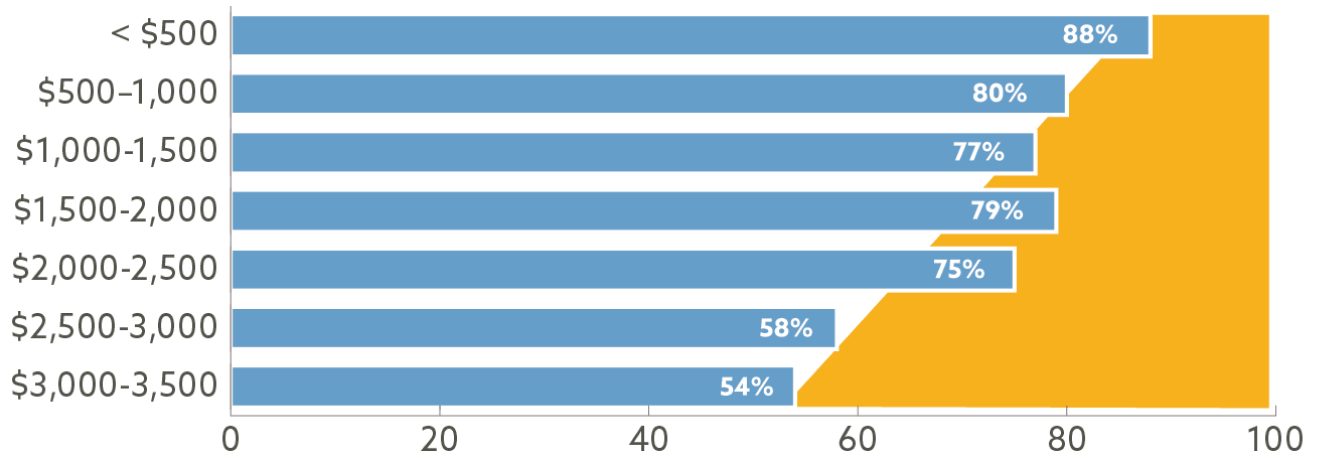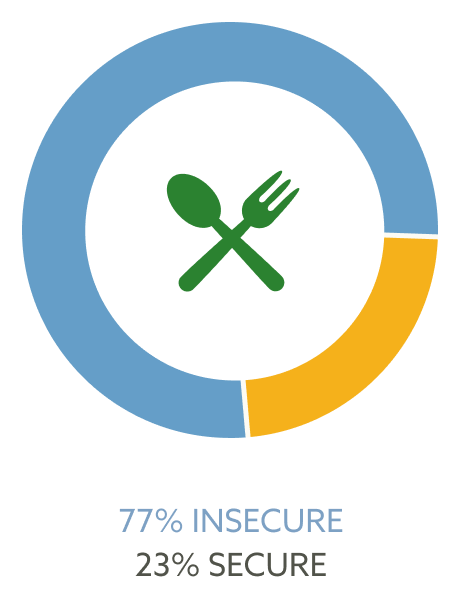Percent of Working Adults in Household
None working
30%
1 working
35%
2 working
26%
3 working
9%
More than one in five Californians are food insecure 1— a stubbornly high cost of living and wages that can’t support basic needs are straining families. Meanwhile, though the Food Bank is often the last line of defense against hunger, pandemic-era government funding for our Food Bank ended in July 2024. We’re depleting our emergency fiscal reserves, and we’ll have to close all Food Bank-run Pantries by June 2025.
To understand the challenges our community is facing and how these changes will impact them, we surveyed more than 3,000 participants and people on our waitlist.2 Their responses reinforced that hunger is a policy choice. We need to invest in social safety net programs and find lasting solutions to the root causes of hunger.
The cost of living in Marin and San Francisco is so high that an individual would need to work approximately 1.5 full-time minimum wage jobs in San Francisco and 1.75 in Marin just to cover their basic expenses.3 This financial reality is why even with 70% of respondents working and 35% having multiple jobs, many in our community are struggling to get by.
None working
30%
1 working
35%
2 working
26%
3 working
9%
Our survey showed 77% of respondents are at risk of hunger. Even at nearly 300% of the federal poverty line (FPL) — $3,765 per month — more than half struggle to put food on the table. When the maximum income to receive CalFresh (formerly food stamps) is 200% FPL4 or below depending on household makeup it’s clear: benefit amounts need to be tied to the cost of living to support people in expensive regions like the Bay Area.


1. According to the California Association of Food Banks: https://www.cafoodbanks.org/hunger-data-reports/
2. Survey respondents reflect participants and waitlisted individuals in Food Bank-run Pop-Up Food Pantries and partner-run Neighborhood Food Pantries. Surveys were sent via SMS or email through SurveySparrow.
3. Based on United Way’s Real Cost Measure (https://unitedwaysca.org/realcost/) and a $16 minimum wage in Marin County and a $18.67 minimum wage in San Francisco County. Full time is defined as 40 hours per week, 50 weeks per year.
4. According to the LSNC Guide to CalFresh Benefits: https://calfresh.guide/summary-of-basic-eligibility/#:~:text=In%20general%2C%20to%20get%20CalFresh,up%20to%20200%25%20of%20FPL.
We must recognize that hunger and poverty do not impact all of us equally. Systemic racism, structural inequality and oppression and the widening wealth gap compound to create even greater barriers for some in our community. Black and Latinx people and single parents struggle disproportionately.

Asian
65.3%
Latin
19.5%
White
8.5%
Black/African American
5%
Mixed Race
0.6%
Middle Eastern/North African
0.5%
Native Hawaiian/Pacific Islander
0.4%
Native American
0.3%
67% female
66% senior
32% have children
41% disability in
household
4% veteran in
household
3% unhoused
38% of those with
children are single parents
74% first language
other than English
Even though we are seeing staggering rates of food insecurity among our community, we are heartened to know our services are working. Once enrolled in a Food Bank service, 96% of participants worry less about getting enough food than before – that is a meaningful and profound impact.


If we are going to truly end hunger, we cannot only address the hunger we see today.
Together with participants, partners, and supporters, we are working towards our vision of a community free of the root causes of hunger, where everyone has access to nutritious food of their choosing and are uplifted by a network of support.

We are collaborating with our network to restore and expand capacity to serve more neighbors experiencing food insecurity and working to improve services with partners and participants.

We are working collectively with neighborhood-based partners to open community markets that provide dignified food choice and access to other support services.

We’re supporting participants in advocating against hunger through a new grassroots advocacy program, amplifying the voices of those with firsthand experience with food insecurity.
The Food Bank has been a leader in working to end hunger for decades — that’s how we know that food banks alone can’t solve the hunger crisis. We need community, we need partnership, and we need fellow advocates. Together, we can end hunger.
Get Food Bank Updates
Privacy & Cookies: This site uses cookies. By continuing to use this website, you agree to their use. To find out more, including how to control cookies, see our Privacy Policy here.
